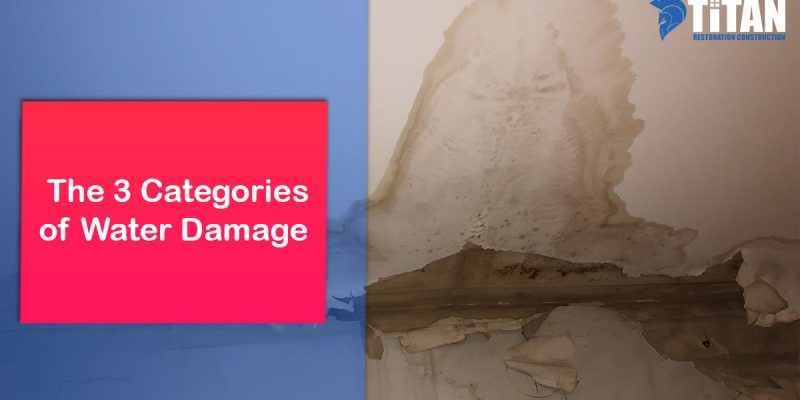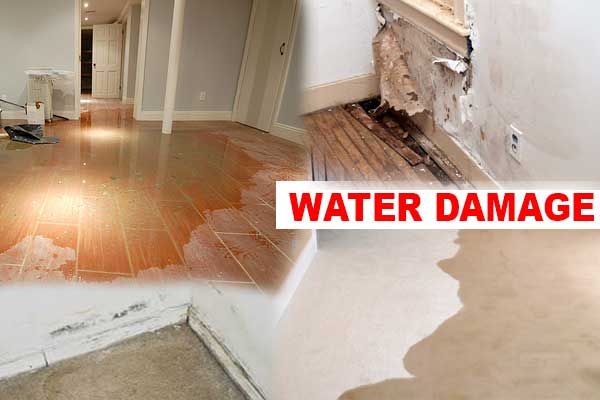Full-Spectrum Water Damage Repair Services for Complete Property Restoration
Full-Spectrum Water Damage Repair Services for Complete Property Restoration
Blog Article
The Refine of Water Damages Cleaning: Ensuring Your Home Is Brought Back Effectively
Water damage can be a complicated challenge for home owners, necessitating a careful and organized clean-up procedure to bring back safety and performance. Originally, an extensive evaluation is essential to recognize the level of the damages and identify the ideal remediation steps. Following this, efficient water extraction techniques play a pivotal role in alleviating more damage. The subtleties of drying, sterilizing, and eventual restoration are equally necessary and usually ignored. Recognizing these phases can make a considerable difference in the end result of your home's reconstruction, motivating a closer appearance at what each step entails.
Assessing the Damage
Upon finding water damage, the very first step is to extensively evaluate the degree of the impact. This first examination is important, as it helps figure out the needed steps for reliable cleanup and reconstruction. Begin by checking the impacted locations, including wall surfaces, ceilings, floorings, and personal items, to determine the resource of the water breach, whether from flooding, leaks, or condensation.
Recording the damages is necessary for both insurance cases and preparing reconstruction efforts - damage restoration services. Usage pictures and composed notes to capture the extent of the damage, noting any type of affected architectural components and materials. Pay special focus to locations that might not be right away noticeable, such as behind wall surfaces and under rugs, as hidden dampness can lead to further difficulties, including mold and mildew growth
In addition, examine the timeline of the water direct exposure. Eventually, an extensive analysis lays the foundation for an effective water damages cleaning procedure, ensuring that all impacted areas are dealt with efficiently and extensively.
Water Removal Techniques
Specialists commonly utilize completely submersible pumps for bigger quantities of water, which can rapidly minimize flooding in basements or other affected locations. For smaller amounts, wet/dry vacuum cleaners are frequently used to draw out recurring moisture from carpetings and tough surfaces. In addition, utilizing portable extractors permits for targeted elimination in confined rooms or areas with fragile products.
In instances of contaminated water, such as sewage or floodwater, advanced removal methods may include making use of biohazard devices to guarantee security and conformity with health guidelines. High-powered extraction devices are important in lessening water retention in structural products, which can bring about mold and mildew growth and structural deterioration otherwise attended to promptly.
Inevitably, the performance of water removal methods plays a crucial duty in the overall success of the water damages cleaning process, preparing for subsequent repair initiatives.
Drying and Dehumidification
As soon as standing water has actually been properly drawn out, the following critical stage in the water damages cleanup process is drying out and dehumidification. This action is important to prevent additional damage and mold development, which can happen within 24 to 2 days in damp environments.
To achieve reliable drying out, specific tools such as industrial-grade air moving companies and dehumidifiers is utilized. Air moving companies distribute air throughout see this page wet surface areas, enhancing evaporation rates, while dehumidifiers reduce humidity degrees airborne, promoting a helpful environment for drying. The combination of these tools makes sure that wetness is drawn out from home furnishings, floorings, and wall surfaces, permitting them to dry completely.
It is essential to check the drying out process very closely. Specialists frequently make use of wetness meters to assess the dampness material in various materials, making sure that all influenced areas get to acceptable dry skin levels. This careful technique assists to stop surprise moisture pockets that might bring about architectural damage or unhealthy mold and mildew development.

Cleaning and Sanitizing
After the drying and dehumidification stage is complete, the next important action in water damage cleaning is cleaning up and disinfecting the impacted locations. This process is crucial to avoid the growth of mold and mildew, bacteria, and various other microorganisms that grow in wet environments.
The cleansing stage usually entails eliminating any particles, dirt, and contaminants from surfaces making use of specialized cleaning agents. For hard surfaces, a mix of soap and water or commercial cleaning items is usually employed. Soft materials, such as upholstery and carpetings, may need a lot more extensive cleansing techniques, including heavy steam cleansing or deep removal strategies, to make certain detailed sanitation.

Sanitizing adheres to cleaning, using EPA-approved anti-bacterials to get rid of hazardous microorganisms. This step is essential, specifically in locations that might have come right into call with floodwaters or sewer, as these sources can present serious health threats.
Additionally, it is flood restoration cleaning very important to address any kind of continuing to be smells, which might need the usage of smell neutralizers or sophisticated techniques like ozone treatment. Appropriate look here cleansing and sterilizing not only restore the safety and health of your home however also prepared for effective repair and repairs in subsequent stages of the water damages clean-up procedure.
Repair and Fixings

Once the analysis is total, repair efforts can begin. Furthermore, floor covering might require similar focus, depending on the level of water exposure.
It is vital to engage experienced restoration specialists during this process, as they possess the knowledge to take care of complicated repairs successfully. Furthermore, they can help reduce potential future concerns, such as mold development or architectural instability, thus making sure a habitable and risk-free living setting. Eventually, effective remediation and fixings restore the home's stability and boost its overall value.
Final Thought
To conclude, the process of water damage cleanup is crucial for bring back a home to its pre-damage condition. Each stage, from examining the damage to implementing efficient water removal methods, followed by thorough drying, sterilizing, and essential fixings, plays an essential function in guaranteeing security and conformity with structure standards. Reliable implementation of these actions not just reduces instant damages however likewise boosts the long-term honesty and value of the home.
Water damage can be an overwhelming obstacle for house owners, necessitating a structured and thorough clean-up process to recover safety and capability. Inevitably, an extensive assessment lays the foundation for a successful water damage clean-up procedure, making certain that all influenced locations are resolved effectively and thoroughly.
Effective water removal techniques are essential in mitigating damages and preventing additional difficulties following a water invasion event.In final thought, the process of water damages clean-up is essential for recovering a home to its pre-damage condition. Each stage, from examining the damages to implementing efficient water extraction methods, complied with by detailed drying out, disinfecting, and essential fixings, plays a necessary duty in guaranteeing safety and security and compliance with structure requirements.
Report this page